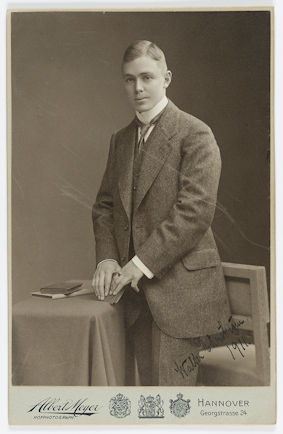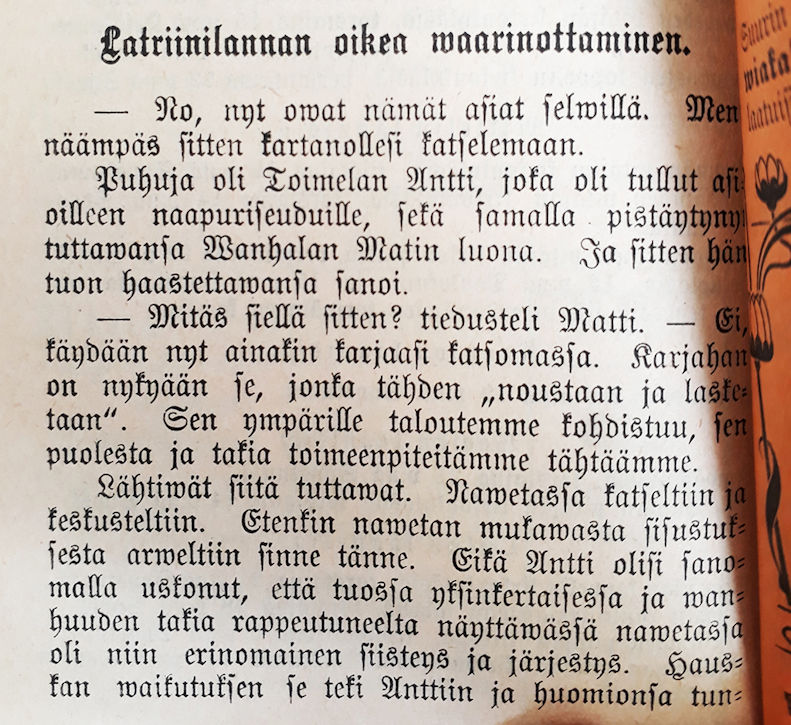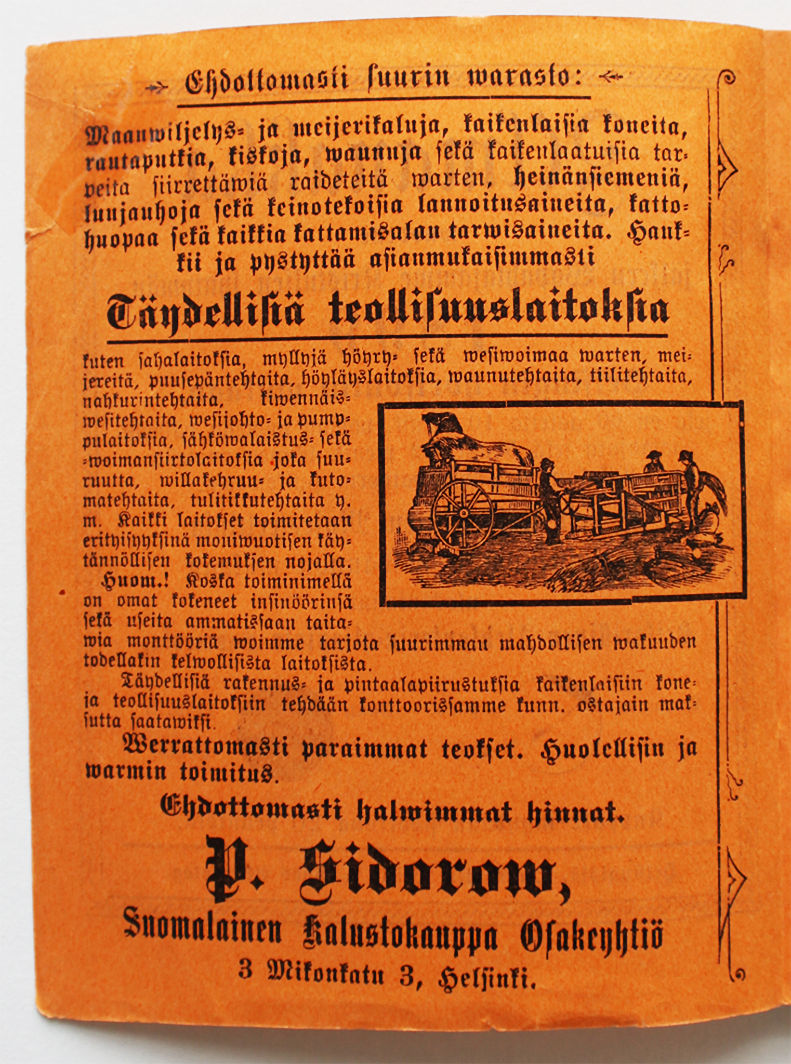Two brown cows in a tie stall. One is standing and the other is lying down. In front of the cows is a feed trough and below is a manure storage pit. The cows are part of a miniature used by Finnish milk hygienist and veterinarian Walter Ehrström (1890–1966). The object is approximately 30 cm long in each direction and is estimated to have been completed in 1937.

In a tie stall, the animals are tethered within their stalls, allowing them to stand or lie down, but not turn around. In Sweden and Norway, tie stalls can no longer be built, and a similar ban has long been discussed in Finland as well.
The health of the cows and the hygiene of the shed are maintained by cleaning the manure. In modern cowsheds, manure and dirty bedding are removed from under the cows to a manure gutter, while urine is separated into a urine gutter below and, from there, to a urine container outside the shed. Manure conveyors transport the manure from the gutter to the manure storage pit, from where it is eventually taken to the fields to be used as fertiliser. Urine can also be used as fertiliser.
Walter Ehrström and milk hygiene
(Otto) Walter Ehrström was the first Finnish veterinarian dedicated to milk hygiene. He studied in Hanover and completed his doctoral degree in Leipzig in 1920. When working as the city veterinarian in Helsinki from 1918 to 1954, he created a milk inspection system in which milk samples were taken at various points of the delivery chain. Milk was ordered to be cooled quickly with ice, and transports were made more systematic in order to prevent milk from being spoiled on the way to consumers. Control activities as well as educational and advice campaigns were also integral parts of the system and, in the 1920s, rewards and competitions were launched. In the 1930s, milk began to be priced by quality. All the above measures helped to considerably improve the quality of milk.

Other Finnish cities and towns adopted the milk inspection system used in Helsinki, and it also served as a model for the Finnish milk inspection act of 1946. Ehrström played an important role in drafting the act, and current EU legislation on milk hygiene also relies on the principles outlined in the act. In the postwar period, Ehrström persuaded UNICEF to donate new pasteurisation machines to dairies and even succeeded in establishing a link between milk hygiene and the Helsinki Olympics because they provided a good reason to make milk control more efficient and add resources.
Now belonging to the collections of the Helsinki University Museum, the miniature manure storage pit, including the cows, was probably used by Ehrström in his educational work. Model cowsheds, materials and new work methods were showcased at fairs and in professional journals. Ehrström donated some of his educational materials to the College of Veterinary Medicine, established in 1945. From there, the items ended up in the museum of veterinary history, which was merged with the Helsinki University Museum in the early 2000s. The miniature manure storage pit will be on display until 11 September 2021 at the Helsinki Observatory in the A Matter of Time exhibition created in collaboration with the University’s Almanac Office.
Utilising manure
The manure storage pit is connected not only to animal care, but also to general cleanliness and the utilisation of nutrients. As is well known, manure has long been used to boost the growth of cultivated plants, but people have not always known how to process it optimally. In Finland, information on the correct handling of manure has been distributed, for example, through educational articles included in calendars. The 1899 almanac did so in the form of a story entitled ‘The correct usage of latrine manure’.
“[…] Antti Toimela […] had […] dropped by on his acquaintance Matti Wanhala.
[…]
No, let’s at least go have a look at your cattle. After all, these days cattle is what we ‘get up and go to bed’ for. It is what our economy revolves around, it is what we work for.
[…]
There, Matti explained how he uses dry soil under manure in the summer after applying manure resources in the fields. He also stores similar dry soil for the winter, when the accumulated manure resources are often spread, with a layer of soil always added between. This ensures that the manure does not go to waste due to accidental combustion, and what evaporates from the manure helps fertilise the land. Moreover, the urine collected in containers in the stables and cowshed is poured on dunghills.”

Information on the handling of manure is also provided in the almanac of 1862:
“Just as sad as it should be unexpected is that almost the majority of farmers attend to manure inappropriately, and yet everyone accepts and understands the great value and necessity of cow manure.”
In other words, good manure should not be wasted and, thus, the provision of advice has been very useful. So, what then should be done with manure, and what are the disadvantages of treating manure incorrectly? At present, you can read the instructions for treating manure directly from legislation. The nitrates decree describes the minimum capacities of manure storage pits, the permitted time periods for spreading manure, and the permitted distances from waterways and wells. The Finnish Food Authority has also issued instructions for the use of fertilisers. Manure that is treated and spread incorrectly can cause harvest contamination, animal illness or environmental degradation. After all, the nitrogen load of the Baltic Sea is mostly attributable to agriculture and human wastewater. In addition, the storage and treatment of manure causes carbon dioxide, methane and nitrous oxide emissions.

The Walter Ehrström Foundation, established in 1958, continues to award bronze, silver and gold medals for ‘distinguished efforts to produce high-quality milk and promote food hygiene’. The medal criteria have, however, also been criticised. For example, the Eläinystävä magazine published an article in 2018 describing the animal protection violations of dairy farmers who had received one of the medals. The Foundation has also endowed two professorships to the University of Helsinki’s Faculty of Veterinary Medicine: one in milk hygiene and bovine health in 2000 and another in industrial milk hygiene in 2006. Building EE at Viikki Campus has a lecture room named after Ehrström, outside of which is a display case presenting his life and times. In addition, Ehrström’s impact is still in evidence in the activities of various Finnish associations, such as the Finnish Association for Milk Hygiene and Maito ja Terveys ry (Milk and Health Association). You are be able to read more on the dissemination of milk-related information, or propaganda, in this blog’s previous post.
Saara Seppälä, guide / Helsinki Observatory
Translation: University of Helsinki Language Services
Sources
Alitalo, Ilkka: Ehrström, Walter. Website of the National Biography of Finland. Studia Biographica 4. Helsinki: Finnish Literature Society, 1997–. http://urn.fi/urn:nbn:fi:sks-kbg-008120, accessed on 8 June 2021.
Itämeren typpikuorma Suomesta – ymparisto.fi. https://www.ymparisto.fi/fi-FI/Meri/Mika_on_Itameren_tila/Itameren_typpikuorma_Suomesta(31457), accessed on 9 June 2021.
Lannoitus – Ruokavirasto. https://www.ruokavirasto.fi/viljelijat/tuet-ja-rahoitus/ymparistokorvaus/lannoitus/, accessed on 9 June 2021.
Lehtonen, Satu: Naapurimaat kieltäneet parsinavetat. Maaseudun Tulevaisuus, 11 October 2016. https://www.maaseuduntulevaisuus.fi/maatalous/naapurimaat-kielt%C3%A4neet-parsinavetat-1.164549, accessed on 16 June 2021.
Lindqvist, Maria: Vain hyvinvoiva eläin tuottaa hyvin? – Maitohygieniamitali eläinsuojelu- ja ympäristörikostutkinnassa oleville tuottajille. Eläinten ystävä, 15 June 2018. https://www.elaintenystava.fi/uutiset/kotimaa/245-vain-hyvinvoiva-elaein-tuottaa-hyvin-maitohygieniamitali-elaeinsuojelu-ja-ympaeristoerikostutkinnassa-oleville-tuottajille-091411-15062018,, accessed on 9 June 2021.
Säätiö. Maitohygienialiitto. http://www.maitohygienialiitto.fi/walter-ehrstromin-saatio/saeaetioe, accessed on 9 June 2021.
VirtuaaliKYLÄ – Opetusmaatilat. http://www.virtuaali.info/opetusmaatilat/?tila_id=1&prosessit&pid=2&aid=20&kortti=3399&o=1218, accessed on 15 June 2021.
Valtioneuvoston asetus eräiden maa- ja puutarhataloudesta peräisin olevien päästöjen rajoittamisesta. https://www.finlex.fi/fi/laki/alkup/2014/20141250, accessed on 9 June 2021.
Walter Ehrström – maitohygienian uranuurtaja. http://www.maitohygienialiitto.fi/walter-ehrstromin-saatio/walter-ehrstrom, accessed on 7 June 2021.
